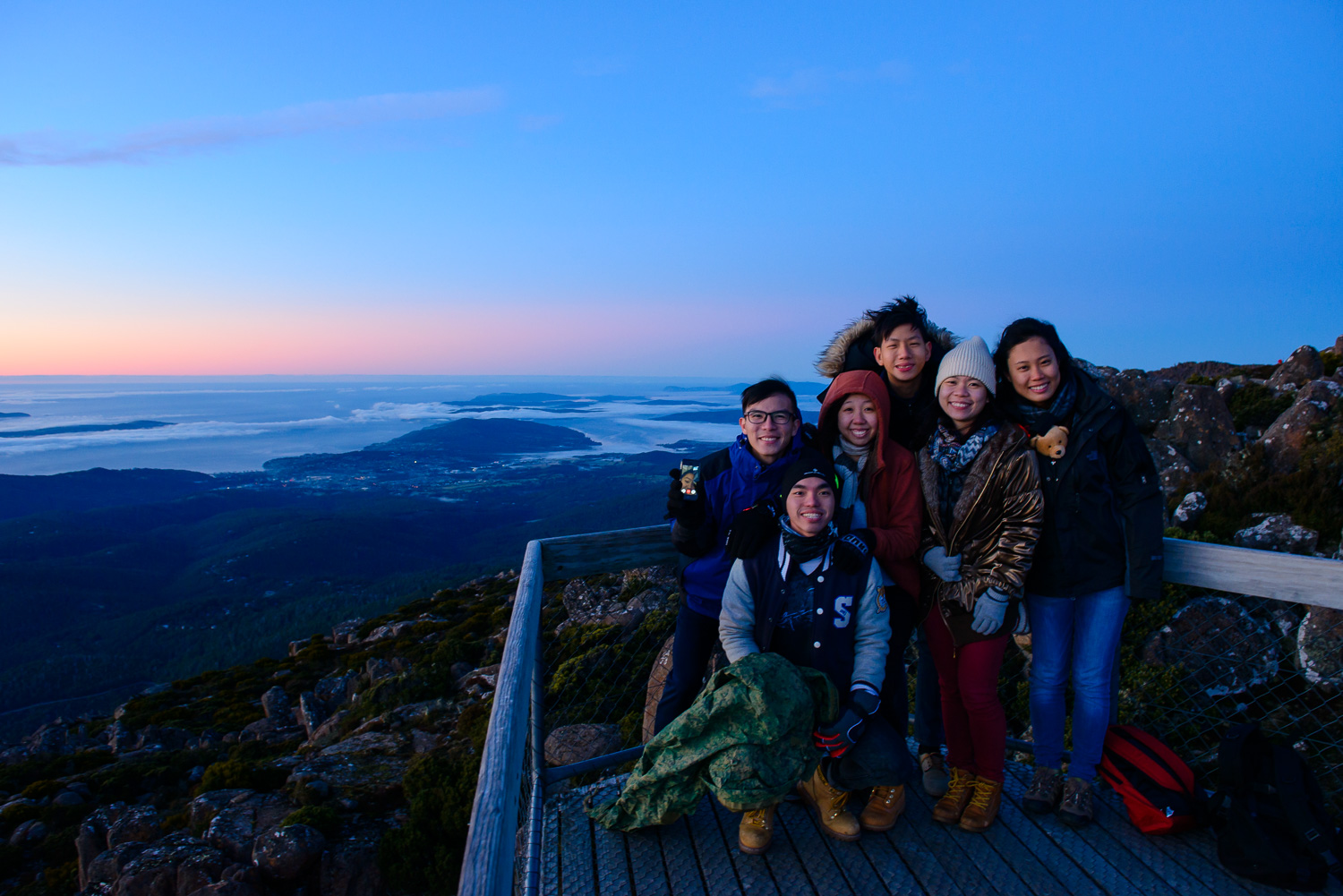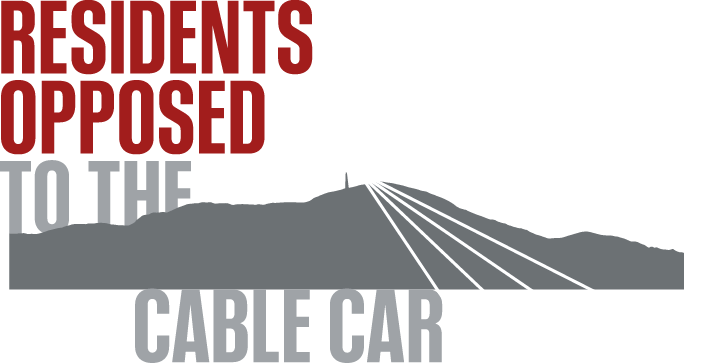Not environmentally friendly
The MWCC proposal is anything but environmentally friendly. It would despoil an ancient landscape and Aboriginal heritage with destructive new roads, massive towers, wires, aerial buses and an imposing building at the Pinnacle. Restaurants and other facilities would lead to a dramatic increase in visitors to the summit, with many opting to drive. The Pinnacle would be effectively privatised, with the future of kunanyi/Mt Wellington tied to the commercial interests of a single developer.
The delightful natural setting of mountain and river is a large part of why many of us choose to live in Hobart. The mountain is a part of who we are. There is no other Australian city, and few in the world, privileged with such a wild and beautiful landscape close by. The forested mountain slopes and the soaring dolerite columns of the Organ Pipes are the ever-present backdrop to our lives.
Bulldozing a 2.4km road through threatened silver peppermint forest
Destruction for the base station
The proposed access to the base station is a new road, 2.4 km long and 9 to 18 metres wide, bulldozed across steep slopes through threatened silver peppermint forest in McRobies Valley.
The area cleared for the road would be greater than 7 soccer fields and include up to 100 large trees, reducing foraging and nesting habitat for the critically endangered swift parrot and vulnerable masked owl. Evening traffic would create a road-kill hot spot for the Tasmanian devils, wallabies, quolls, bandicoots, echidnas, raptors and owls that make that woodland home.
The base station site would be carved out of forest and a grassy firebreak on the lower slopes of the mountain. Just 55 car parking spaces are planned. However, the cableway could carry up to 660 people per hour and if half of those people arrived by bus, and each car held 3 people, the carpark would be full in 35 minutes! A much larger car park would be required, necessitating further large-scale earthworks.
Waterfalls and secluded walking tracks in Myrtle Gully located close to the proposed cableway base station are touted as an associated attraction for the development’s mass tourism market. The cable car would cut across 5 major walking and bike trails, impacting the serenity of the substantially wild and natural landscape on the eastern face of the Mountain.
Defacing the Organ Pipes forever
Massive towers
A massive 36 metre tower, 15 x 15 metres at the base and engineered to support the 2.1km span of the proposed cableway and cable cars during frequent extreme winds, would stand above the Organ Pipes. It would be clearly visible from many areas in and around Hobart. Significant tree clearing would be required for the two 55 metre towers – 2/3 the height of Wrest Point Casino, near the base station.
Aerial buses
Large aerial buses carrying up to 80 people would pass over the cliffs of the Organ Pipes as frequently as every five minutes. Overhead cables and passing carriages would compromise the experience of walkers, bikers and climbers. Moving objects stand out and metal and glass reflect sunlight – the steady flow of cable cars would be very visible.
MWCC has disclosed that one reason to target the iconic Organ Pipes is so that visitors could be charged higher ticket prices. MWCC also suggests that the cable car may “enhance the view” as it rises or drops down over the Organ Pipes.
A 4000 ㎡, SEVEN LEVEL commercial complex would sprawl across the Pinnacle
Privatising the Pinnacle
The 4000 ㎡, SEVEN LEVEL commercial complex would sprawl across 165 metres of fragile alpine habitat at the summit, with construction impacts and infrastructure extending over a larger area again. To excavate the 12 metre deep foundations extensive blasting above the notoriously unstable Organ Pipes geo-conservation area would be required. Around 500 truck loads of the mountain’s summit would need to be removed. Once entrenched, future expansion to accommodate commercial interests would be very likely.
MWCC touts summit recreation prospects but the reality would be less than the hype. Days suitable for snow sports are already rare and will become more so with warming mountain temperatures. Aerial cables would make paragliding hazardous in any weather conditions.
Wellington Park Management Trust and the HCC favour visitor facilities at Halls Saddle, with access to an extensive network of walking and biking tracks.
Increased traffic & carbon footprint
Claims that traffic on the Pinnacle Road would be reduced are unrealistic. The lure of restaurants and other facilities would dramatically increase overall visits to the summit, but many tourists would drive rather than pay for an 8 minute cable car ride. Locals would be unlikely to pay for repeat visits and would drive instead. More visitors and longer stays would necessitate an enlarged Pinnacle car park; more cars on the Pinnacle Road would increase CO2 emissions. The notion that the cableway might reduce CO2 emissions is fanciful, especially when the carbon embodied in the concrete and steel of the buildings, towers and cableways is accounted for.
Increased traffic in South Hobart would make congestion on Cascade Road and Davey Street much worse. MWCC has proposed a complex new junction at the intersection of Cascade Road and McRobies Road but has no intention of paying for it!

Failure to engage with the community
Flawed process
MWCC has failed to properly engage with residents and has repeatedly cancelled public meetings. Public submissions received in three public consultation processes have been ignored and statutory protections for Wellington Park have been removed.
In 2017 the Parliament introduced controversial new legislation that allows the developer to circumvent normal planning process.
White elephant ?
The MWCC budget of $50M is unrealistic and the project is underpinned by economic modelling that relies on questionable assumptions and high rates of growth. As a mass tourism operation the financial viability of the project is uncertain.

